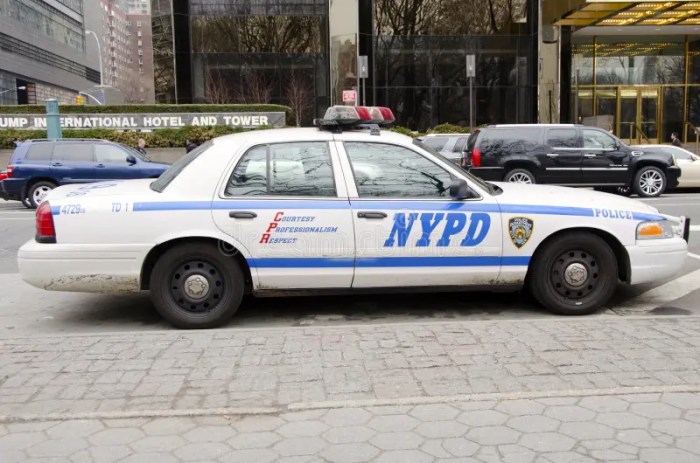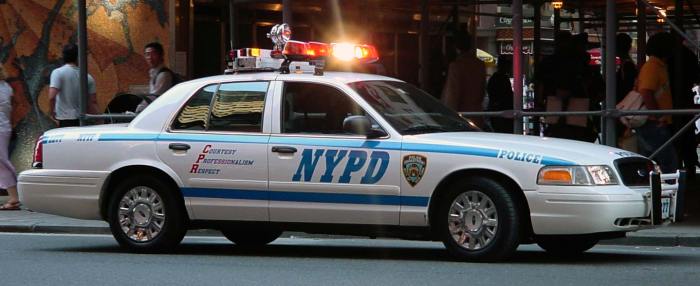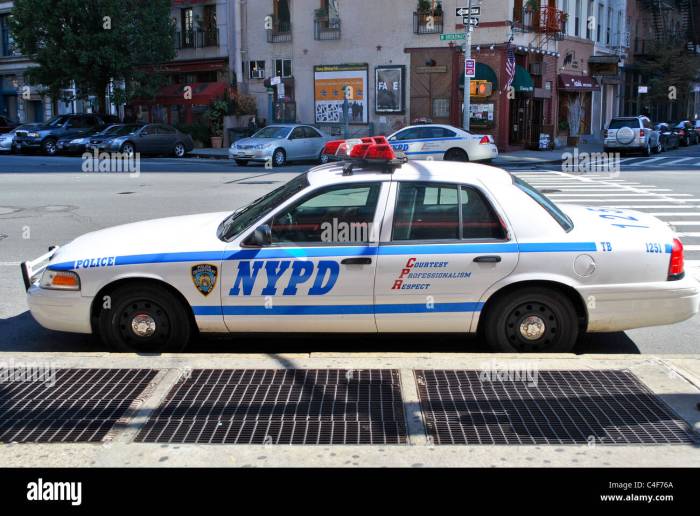63 New Yorker Police Car Price A Collectors Guide
1963 Chrysler New Yorker Police Car: A Retrospect: 63 New Yorker Police Car Price
63 new yorker police car price – The 1963 Chrysler New Yorker, while not as ubiquitous as some other models in police fleets, holds a unique place in automotive and law enforcement history. This article delves into the specifications, market value, historical context, visual characteristics, and maintenance considerations of this classic police vehicle.
Vehicle Specifications, 63 new yorker police car price

Source: dreamstime.com
The 1963 Chrysler New Yorker police cars typically featured a robust build, reflecting the era’s emphasis on durability. These vehicles were often equipped with heavy-duty suspension systems to handle the rigors of patrol work. Specific features varied depending on individual police department customizations, but common additions included heavy-duty brakes, reinforced frames, and specialized lighting.
Engine specifications varied, but commonly included Chrysler’s powerful V8 engines, offering substantial horsepower and torque for the time. Exact figures are difficult to pinpoint without specific model details, as police departments often customized their vehicles. However, horsepower ranged from approximately 230 to 300 hp, with torque figures correspondingly high. Fuel efficiency, compared to modern police vehicles, was significantly lower, reflecting the technological limitations of the era.
Modern police vehicles emphasize fuel economy for cost-effectiveness and environmental concerns, a stark contrast to the fuel-guzzling V8s of the 1963 New Yorker.
The following table compares the dimensions of a 1963 New Yorker police car to a modern police cruiser (using a typical example for comparison):
| Feature | 1963 Chrysler New Yorker | Modern Police Cruiser (Example: Ford Police Interceptor Utility) |
|---|---|---|
| Length (in) | 217 | 198 |
| Width (in) | 79 | 79 |
| Height (in) | 56 | 68 |
Pricing and Market Value
The price of a 1963 New Yorker police car varies dramatically based on condition, originality, and the presence of any unique police-specific modifications. A well-preserved, original example in excellent condition would command a significantly higher price than a vehicle requiring extensive restoration. Condition and rarity are key factors influencing value.
These vehicles can be found through various channels, including online auction sites like eBay and Bring a Trailer, as well as specialized classic car dealerships and private sellers. Online forums and clubs dedicated to classic Chrysler vehicles are also valuable resources for locating potential purchases. Restoration costs can range widely, depending on the extent of the work needed.
Minor cosmetic restoration might cost a few thousand dollars, while a full frame-off restoration could easily exceed $50,000.
Hypothetical Sales Listing:
1963 Chrysler New Yorker Police Car – Fully Restored
Immaculately restored 1963 Chrysler New Yorker, originally used by the [Fictional City] Police Department. Features original police markings, period-correct paint and interior, and a meticulously rebuilt V8 engine. This rare classic is a true testament to automotive history and would be a stunning addition to any collection. Asking Price: $75,000.
Historical Context and Significance

Source: newyorkinjurycasesblog.com
The 1963 Chrysler New Yorker served a crucial role in law enforcement, representing a significant step up in vehicle capabilities for many departments. Its powerful engine and robust build provided officers with a reliable platform for patrol and pursuit. However, compared to modern police vehicles, the 1963 New Yorker lacked many safety and technological features.
Technological advancements between 1963 and today are immense. Modern police vehicles incorporate advanced communication systems, computer-aided dispatch, in-car cameras, and sophisticated safety features such as airbags and anti-lock brakes. Policing methods and strategies have also evolved dramatically, with a greater emphasis on community policing, data-driven analysis, and de-escalation techniques.
Timeline of Key Events and Developments:
- 1963: The Chrysler New Yorker is introduced, and some departments begin incorporating them into their fleets.
- 1970s-1980s: The rise of muscle cars and improved technology lead to faster and more equipped police vehicles.
- 1990s-Present: The integration of advanced technology, including computers, communication systems, and safety features, transforms police vehicles.
Visual Representation
The exterior of a 1963 New Yorker police car typically featured a two-tone paint scheme, often black and white, with prominent police markings and decals. The long, flowing lines characteristic of 1960s American design were evident, with chrome accents and large tailfins. The interior featured a bench seat, a large dashboard with simple gauges, and minimal technological equipment, reflecting the era’s simpler technology.
Detailed Description for Illustration: A long, imposing two-tone black and white 1963 Chrysler New Yorker police car sits on a city street. The car’s chrome gleams, and the police markings are clearly visible. The car’s imposing size and classic design are immediately apparent, reflecting the era’s automotive aesthetic. The contrast between this classic design and the sleek, modern lines of today’s police vehicles is stark.
Maintenance and Repair

Source: alamy.com
Maintaining a 1963 New Yorker police car requires specialized knowledge and resources. Common issues include carburetor problems, electrical system malfunctions, and wear and tear on the suspension and braking systems. The availability of parts can be challenging, as many components are no longer manufactured. Finding original or reproduction parts may require extensive searching and networking within the classic car community.
Determining the price of a 1963 New Yorker police car involves considering its condition and any modifications. The cost can vary widely, but comparing it to the price of a more readily available model like a 2018 Kia Optima SXL Turbo new car price provides a useful contrast in terms of both era and market value.
Ultimately, the value of the classic police vehicle rests on its unique history and collectability.
A basic maintenance check should include inspecting fluids (oil, coolant, brake fluid), checking tire pressure, and examining the battery and electrical connections. More in-depth checks would involve inspecting the carburetor, brakes, suspension, and exhaust system. Finding a qualified mechanic specializing in classic car restoration requires researching local shops with experience in working on vintage American vehicles. Online forums and classic car clubs can be valuable resources for locating reputable mechanics.
Essential Questionnaire
What were the common engine options for a 1963 New Yorker police car?
Chrysler offered several V8 engine options for the 1963 New Yorker, with variations in horsepower and torque. Specific details would depend on the exact police package specifications.
Where can I find parts for a 1963 New Yorker police car?
Parts can be sourced from classic car parts suppliers, online marketplaces specializing in vintage Chrysler parts, and through networks of classic car enthusiasts and restoration shops.
How much does it typically cost to restore a 1963 New Yorker police car?
Restoration costs are highly variable and depend on the vehicle’s condition, the extent of the restoration, and the labor rates of the chosen mechanic. Costs can range from several thousand to tens of thousands of dollars.
Are there any clubs or organizations dedicated to 1963 Chrysler New Yorkers?
Yes, several Chrysler car clubs and classic car enthusiast groups may have members with expertise in the 1963 New Yorker. Online forums and social media groups dedicated to classic cars are also valuable resources.





















